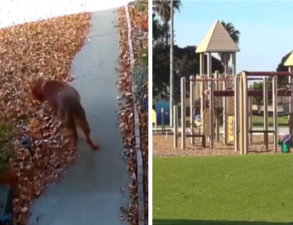
Article content
The highly contagious canine parvovirus outbreak continues escalating in Windsor, with at least 18 dogs dead and another 34 infected — but provincial officials warn the real number is likely higher.
“Animal Welfare Services is aware of 34 dogs which have shown symptoms of the virus but it should be noted that additional cases in the community are likely,” provincial spokesman Brent Ross told the Star. “AWS continues to monitor the number of impacted animals given the dynamic nature of the outbreak.”
Advertisement 2
Story continues below
Article content
The province’s Animal Welfare Services said that as of Wednesday, they had seized 24 dogs. Another 10 dogs were taken to veterinary clinics by their owners or humane societies.
“AWS is aware of 18 dogs having passed away, some of which died prior to AWS engagement,” said Ross.

Animal protection agencies vaccinated 65 dogs on Dec. 14 with a mobile clinic at 333 Glengarry Ave., the dense social housing complex where the outbreak erupted. More mobile clinics are in the works, but the times and locations have not been nailed down.
Ontario’s Animal Welfare Services received its first call about the Windsor outbreak on Dec. 4.
What is canine parvovirus?
It’s a highly contagious virus that mainly attacks dogs and wolves.
Canine parvovirus emerged in 1978. It’s believed a virus similar to feline panleukopenia crossed over from cats to dogs. Within two years, the virus had spread worldwide.
Signs of illness, including lethargy, vomiting, diarrhea, and fever, appear within three to 10 days of infection.
Most commonly, the canine parvovirus virus attacks the gastrointestinal system. It spreads into the bloodstream, attacking rapidly dividing cells in the lymph nodes, intestines and bone marrow.
Advertisement 3
Story continues below
Article content
There is also a less common cardiovascular form of the virus that attacks the heart muscles.
Unvaccinated dogs are particularly at risk. So are young dogs due to their developing immune systems.

How does the virus spread?
Canine parvovirus mainly spreads through contact with an infected dog or the feces of infected dogs, and it doesn’t take much. Indirect contact is enough.
The virus is so dangerous because it’s extremely resilient. It can withstand most household cleaning products, along with cold, heat, and humidity.
It can also survive in various environments without a host for years. Dogs can get infected from places such as kennels, grooming tools or simply walking on grass.
“It can easily jump from one dog to another, either through direct contact or by contaminated surfaces, food, and water,” according to the province.
Crowded conditions such as shelters, apartment buildings, and dog parks can create perfect conditions for the virus to spread quickly.
Hygiene is another factor, according to Animal Welfare Services. Poor cleaning practices in places where dogs gather help the virus spread.
Advertisement 4
Story continues below
Article content
Adding to the threat is that some dogs are asymptomatic carriers and can spread the disease without seeming sick.
Humans can’t catch canine parvovirus.

What can you do to protect your furry friends?
Vaccination is key.
The death rate is in the 90 per cent range for untreated dogs. But vaccination can help prevent infection.
Animal Welfare Services is “strongly recommending” that concerned dog owners call their veterinarians.
Other important prevention measures include picking up after your pet and keeping your animal clean.
Don’t let your dog share equipment such as dog bowls, toys, and grooming tools.
Avoid dog parks, boarding facilities, and any other place where your pet may encounter unvaccinated animals or that you fear is unclean.
“To help control the spread of parvovirus, vaccination and good hygiene practices are essential,” Animal Welfare Services said.
Article content
This post was originally published on this site be sure to check out more of their content.















































Comments